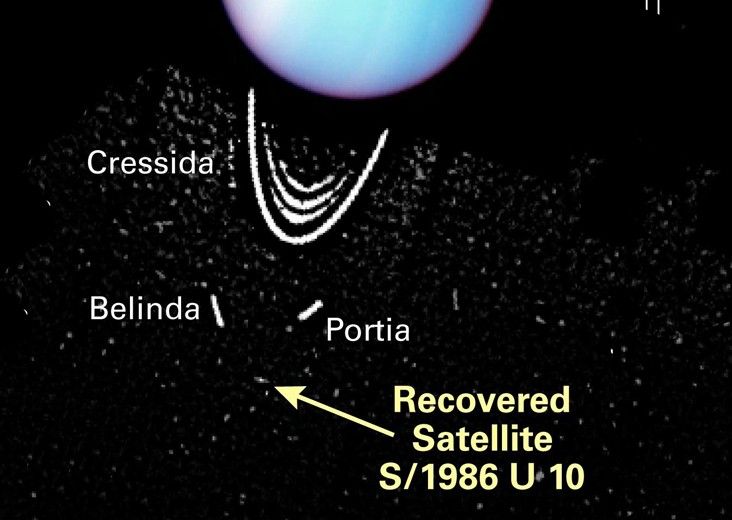Perdita
Discovery
Perdita was discovered 13 years after its picture was taken by Voyager 2 during the spacecraft's flyby in 1986. University of Arizona's Erich Karkoschka found the moon in the public archive of Voyager 2 images when he compared them with those of the Hubble Space Telescope. The International Astronomical Union (IAU) recognized it as a moon of Uranus, but withdrew its designation as premature when subsequent efforts failed to observe it. Its existence was finally confirmed, however, in 2003, when the Hubble imaged an object right in Perdita's predicted location.
Overview
Perdita's orbit lies between those of Belinda and Puck, about 76,400 km from Uranus. It is believed to be about 30 km in diameter and very dark (albedo of about 0.08). Little else is known.
How Perdita Got its Name
Originally called S/1986 U10, Perdita was named for the daughter of Leontes and Hermione in William Shakespeare's play, "The Winter's Tale." In the play Leontes initially refuses to believe that Perdita is his daughter because he thinks that his wife has had an affair with king Polixenes of Bohemia. Circumstances lead to Perdita being abandoned by her father and later found and raised by a Bohemian shepherd. 16 years later Bohemian Prince Florizel meets and falls in love with Perdita and it is revealed that she is the princess of Sicily. Perdita's father Leontes reconciles his differences with king Polixenes, and the marriage is ratified.




























